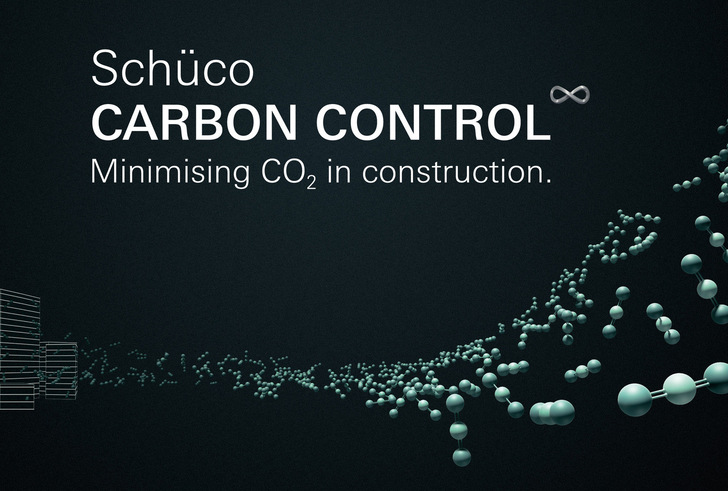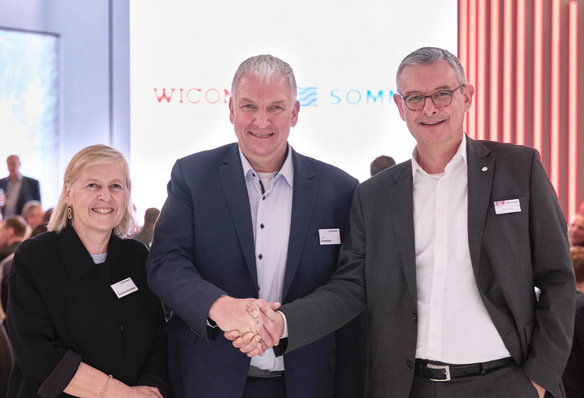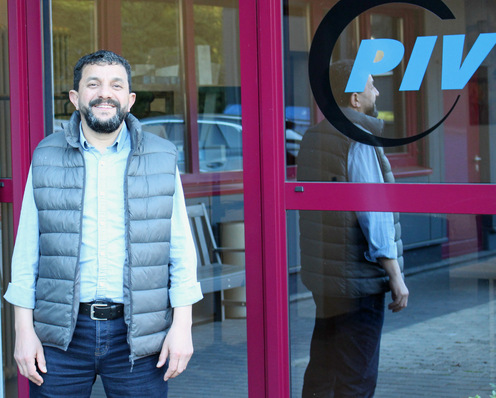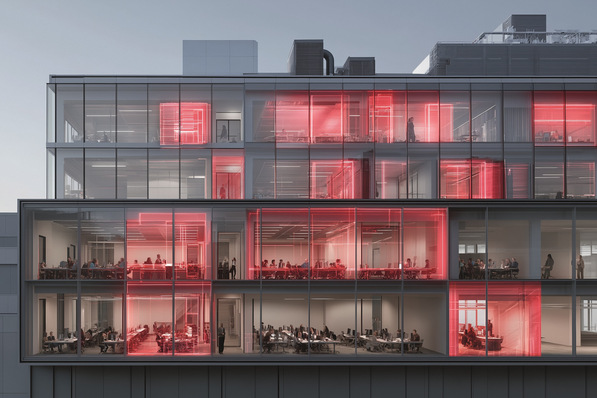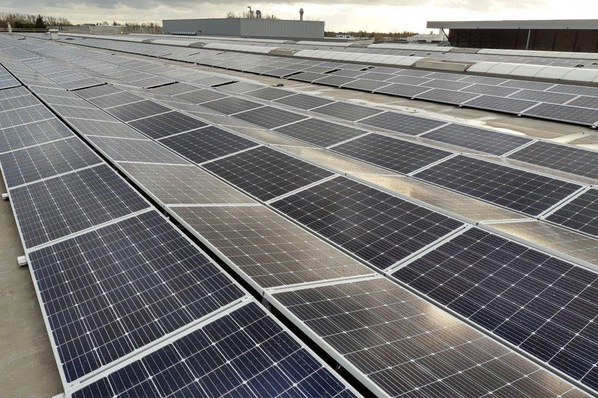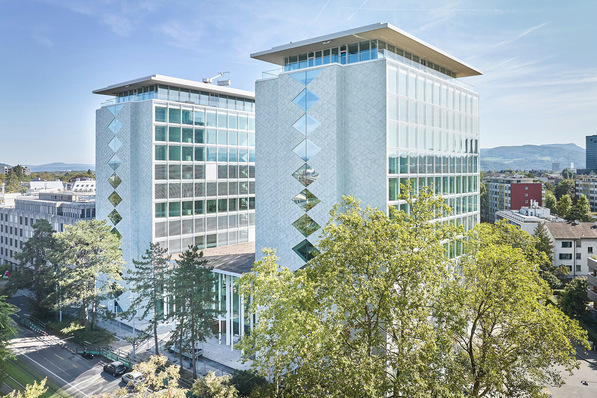One of the great challenges of this time is to achieve climate neutrality in the building sector. It is the function of the building industry to meet the ambitious targets set by politicians and to set the CO2 emissions generated during the construction, operation and demolition of buildings to zero. With Carbon Control, Schüco offers a modular range consisting of different products and services throughout the entire life cycle of the building, with which the decarbonisation of windows, doors and facades can be controlled on a property-specific basis.
Buildings thus remain future-proof investments that can meet the legal requirements even after 2030, 2045 and 2050. This is because the "life-cycle greenhouse potential" of a building will be decisive for long-term value retention in the future, which is calculated with the GWP value - the Global Warming Potential value. The GWP value is shown as a CO2e value (for CO2 equivalent) and results from the interaction of operational carbon emissions and embodied carbon emissions. Operational carbon emissions occur during the operation of the building, while embodied carbon emissions show how much CO2 is embedded in the products used. Total emissions can be reduced through resource-conserving material use, building-integrated photovoltaics, intelligent building control or Cradle to Cradle certified products.
See also: AGC Glass Europe launches low-CO2 glass
However, managing this process and thus complying with complex regulations and certifications is difficult to reconcile with the situation of those involved in construction. For planning and architectural offices, it is becoming more and more challenging to orientate themselves in the mass of requirements and specifications. Fabricators, on the other hand, are faced with the difficulty of meeting the requirements of sustainable tenders so that their company remains competitive and future-proof.
CO2 control during all phases of a building’s life cycle
With Carbon Control, Schüco offers a modular range consisting of products and services along the life cycle of a building, with which the decarbonisation of the facade can be controlled on a property-specific basis. Carbon Control is structured along the four life phases of a building: design, construction, operation and deconstruction. In addition to the products and services from the Schüco portfolio, the offer includes project-specific advice from a team of CO2 consultants who support architects, planners and fabricators in actively minimising the CO2 footprint of the building envelope.
Design to Decarbonise
The course for the subsequent carbon footprint of a building is already set in the design and planning phase. For this reason, Schüco Carbon Control begins with a holistic approach, offering its services and accompanying advice to investors, architects and specialist planners. This is because the CO2e value can be minimised right from the planning stage through the shape of the building, the choice of materials and surfaces, the sizes of the units and the use of smart building technology. The later phases must therefore be considered right from the start. In addition, the use of Cradle-to-Cradle certified Schüco systems guarantees the harmlessness and recyclability of the materials.
Build to Decarbonise
In the construction phase, Schüco Carbon Control enables the fabricator to actively control the carbon footprint of the planned element. As 3D calculation software, SchüCal offers the right tool for targeted planning with the continuous calculation and display of the carbon footprint as a CO2e value. SchüCal also allows the user to select the material option. Here, in addition to the standard aluminium, there are the two new aluminium grades Low Carbon (LC) and Ultra Low Carbon (ULC) aluminium. The effect of using these new aluminium grades LC and ULC can also be calculated. In addition, Schüco is continuously optimising its sustainable packaging management by installing recyclable material cycles and thus reducing the use of resources.
Also interesting: sedak massively expands solar roof of production facility
With Build to Decarbonise, Schüco ensures the long-term competitiveness of its partners and accompanies them on the path towards CO2-minimised production.
Operate to Decarbonise
Schüco also offers products and services for the highly efficient and CO2-minimised operation of buildings in order to achieve an optimum energy balance. Starting with intelligent building control, through highly thermally insulated building envelope units, to the generation of energy through photovoltaics integrated into the building. Thanks to IoF ID (Internet of Facades), a badge attached to the window, door or facade element via which information on the product is made digitally accessible, maintenance and product upgrades can be efficiently planned and carried out. This ensures the long-term sustainable operation of the building and also extends the service life of the installed systems. In addition, Schüco, like many of its partners, offers an after-sales service that carries out maintenance and upgrades. This ensures that the value of the units is maintained and their functionality is extended.
Recycle to Decarbonise
Cradle to Cradle certifications ensure that building products in buildings are the raw material storehouse of the future. This concept stipulates that all materials used in the system can be returned to the cycle as new material at the end of their service life. In this way, Cradle to Cradle certified systems meet the requirements of the circular economy, to which politicians ascribe central importance in the European Green Deal for achieving climate neutrality. With more than 60 certified aluminium systems, Schüco is a pioneer in the implementation of the Cradle-to-Cradle principle in the building sector and thus contributes to long-term CO2 savings and resource conservation. As a founding member of the A|U|F, Schüco has been committed to the environmentally friendly and resource-saving reuse and recycling of aluminium since 1995. Schüco's plastic products also make their contribution to the circular economy and CO2 minimisation. This is confirmed by the VinylPlus product label. In order to close the PVC recycling loop, Schüco offers its partner companies in the PVC-U sector an exclusive recycling service for old windows and profile residues from window construction with the Re:Core company.
Did you miss this one? First architectural glass produced using hydrogen
In order to be able to use buildings properly as raw material stores of the future, information is needed about which components and materials can be found where in a building and what impact they have on the environment. This can be tracked with the help of the Madaster platform, the online cadastre for materials and products. This facilitates the reuse of the resources used and takes a further step towards a circular construction industry.
Advice, solutions and service from a single source
With Schüco Carbon Control, the complex issue of decarbonisation and the extensive Schüco product range can be perfectly coordinated. The modular range enables inverstors, architects and fabricators to actively control the CO2 value for specific buildings, thereby actively pursuing the path to climate neutrality in the building industry.







